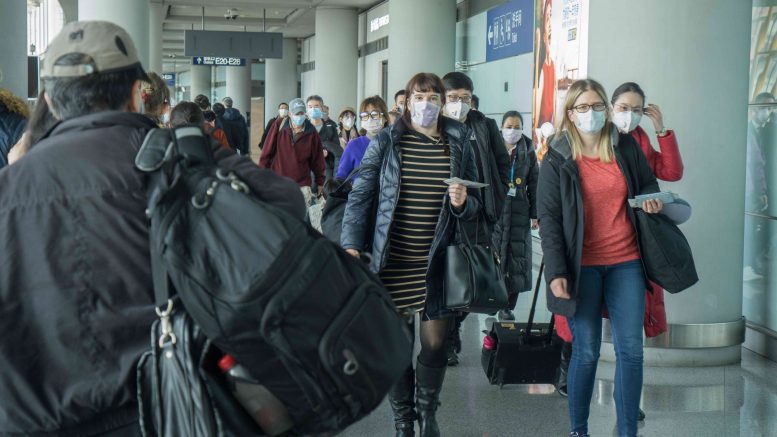When the coronavirus that caused Severe Acute Respiratory Syndrome (SARS) became a worldwide health emergency between November 2002 and July 2003, I was the bureau chief for The Far Eastern Economic Review magazine in Singapore.
Reporters were instructed to stay at home and we spent our days tracking down scientists, doctors and healthcare workers by phone to comment on the mysterious virus. We also spent countless hours interviewing economists and businesspeople in an effort to tally the outbreak’s mounting toll on the global economy.
My brother, an architect living in Hong Kong, found himself working from home in similar circumstances.
It was a terrifying period for everyone, particularly for those with young children (mine were two and three at the time).
SARS ultimately infected 8,096 people from 27 countries and killed 774 people — for a mortality rate of 9.6%. (Of the deaths, 349 were in China, 299 in Hong Kong and 33 in Singapore.)
The current outbreak of a new coronavirus in central China called the 2019-nCoVirus has infected more than 43,000 people in 25 countries and killed 1,018 – all but two of them in mainland China. (These figures will be outdated by the time you read this.)
The SARS virus spread from bats to Asian palm civets — a small nocturnal cat-like mammal considered a culinary delicacy in China — and then to humans. Scientists believe the current coronavirus outbreak also likely originated in bats, although they are uncertain of the intermediary animal host that may have transmitted it to humans.
Last week Nature magazine reported that Chinese researchers believe the intermediate species for the current virus could be pangolins — ant-eating mammals eaten in China as exotic meat but also used in traditional Chinese medicine. “Genetic sequences of viruses isolated from the scaly animals are 99% similar to that of the circulating virus — but the work is yet to be formally published,” the magazine reported on Feb. 7.
Like SARS, which originated at a wet market in China where all sorts of wildlife are sold, some of it trafficked and endangered, the epicenter of the coronavirus in the current outbreak was a wet market in Wuhan.
News reports say the Wuhan market sold everything from bamboo rats to badgers, hedgehogs, snakes, turtles, ostriches, baby crocodiles and salamanders, among others. The Chinese Center for Disease Control and Prevention found that 33 of 585 animal samples tested at the Wuhan market contained evidence of the coronavirus, the Wall Street Journal reported on Feb. 6. The virus could have been transmitted through butchered meat, or from contact with an animal’s saliva, urine or feces.
“Poorly regulated, live animal markets mixed with illegal wildlife trade offer a unique opportunity for viruses to spillover from wildlife hosts into the human population and for viruses to exchange viral components amongst the multiple species being traded creating new viruses with new host spectrums,” Christian Walzer, chief global veterinarian for the New York-based Wildlife Conservation Society, said in a news release. “Chinese scientists believe the Wuhan coronavirus originated in wildlife sold illegally in a live animal market.”
“It is hard to design more perfect conditions for new viruses to emerge than market systems such as that in Wuhan: Tightly pack together a variety of species from around the country or the world and transport them long distances directly into large markets,” he said. “Ensure that these massively stressed and immuno-compromised wild animals are in close proximity to domestic and farmed animals. Then distribute these animals out to major urban populations for consumption.”
China is not the only source of zoonotic infections — those transmitted from animals to humans — but its wet markets have now spread novel viruses twice in the last two decades.
The Chinese government failed to learn from SARS and permanently shut down the wildlife trade that thrives at markets and online across the country — even after acknowledging nearly a decade ago how easily animal viruses can leap to humans and become global pandemics.
The country must permanently ban the practice and crack down on the wildlife trade.
Perhaps this time China will learn. The government’s reputation and legitimacy are at stake.
The authoritarian regime already has come under intense criticism at home and abroad for trying to muzzle Dr. Li Wenliang, a young doctor in Wuhan, who first alerted his medical school classmates that the current virus looked like SARS. He was reprimanded by hospital and Communist party officials. He died on Feb. 7.





Be the first to comment on "Editorial: China must ban wildlife trade to prevent new viruses"